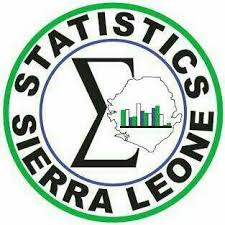Freetown, Sierra Leone – Saturday, 20th September 2025 – In preparation for the upcoming 2026 Population and Housing Census, Statistics Sierra Leone (Stats SL) will commence a ten-day nationwide training program for field officers in support of its national cartographic mapping exercise.
This critical training initiative marks a foundational step toward delivering a credible, inclusive, and technologically driven 2026 Census.
The training exercise will run from Monday, 22nd September to Wednesday, 1st October 2025, and will take place simultaneously across all regional centers: Bo, Kenema, Makeni, Port Loko, and the Western Area (Rural and Urban).
Purpose of the Training
The training is designed to equip selected field personnel with both the technical and practical skills needed for accurate and standardized cartographic mapping across the country.
Participants will be trained in the use of modern digital tools, including GPS-enabled devices and Geographic Information System (GIS) software (EADPad), to effectively:
- Delineate Enumeration Areas (EAs)
- Update boundary and geographic data
- Identify and map dwellings, households, and community structures
This preparatory work is essential to ensure every household, settlement, and structure in Sierra Leone is captured accurately. It lays the groundwork for comprehensive national coverage, helps prevent undercounting or duplication, and enables efficient deployment of census personnel and resources.
What is Cartographic Mapping?
Cartographic mapping involves the creation of detailed, accurate maps that represent the geographic layout of an area. For census purposes, this means dividing the country into manageable Enumeration Areas (EAs)—each assigned to a single enumerator.
This process is central to the credibility and accuracy of the census, ensuring that no individual or community—urban, rural, or remote—is left uncounted or underrepresented.
Expected Outcomes
By the end of the training:
- Field officers will be proficient in using digital mapping tools and GIS software
- Updated and accurate maps of Enumeration Areas will be produced for all districts
- Stats SL will establish a verified national cartographic database to guide 2026 Census planning and logistics
- Informal settlements, remote areas, and evolving community layouts will be effectively identified and mapped.
Relevance to the 2026 Population and Housing Census
Cartographic mapping forms the backbone of the census process. It enables complete coverage, supports logistical planning, and enhances the quality, accuracy, and inclusiveness of the final census data.
Through this mapping phase, Stats SL will be able to:
- Strategically deploy enumerators
- Reduce logistical and operational challenges
- Strengthen the reliability and credibility of the census results
The 2026 Population and Housing Census will be a vital tool for national planning, policy-making, and development programming. A robust cartographic foundation is key to achieving these national goals.
#Census2026: Leh Den Kont You Oh!
For media inquiries or further information, please contact:
Statistics Sierra Leone – Public Relations and Communications Unit
Sourced: Stats SL Comms & PR Unit













